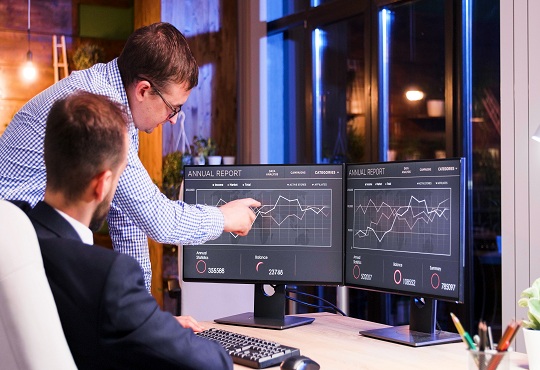Continuous Threat Exposure Management: Key Metrics to Track
Richa Singh,Correspondent, CIOTechOutlook | Saturday, 25 November 2023, 11:10 IST

At the current rate of growth, the damage caused by cyber attacks will be approximately $10.5 trillion per year by 2025. In response to this escalating threat, the Cybersecurity Threat and Event Management (CTEM) approach has been developed, providing comprehensive coverage across diverse domains—from cloud security to Active Directory (AD), software vulnerabilities, network security, and everything in between. Each of these lives in its own silo, with its own boss, its own team and its own list of problems to solve. The goal of the CTEM is to integrate all areas into a holistic vision that reflects the other areas. Basically, it's about gathering all the information and using it to understand your priorities and responsibilities.
“Traditional corporate firewalls are no more effective in protecting against the threats and this has made security and risk management as one off the top agenda of boards of directors. Cyber Security leaders are looking forward to enhance the way they communicate value, importance and status of program activities by linking to business goals and objectives, not by presenting technology metrics and project status.” says Leela Kaza, CEO Accolite.
Vulnerability Density: A Measure of Risk Distribution
Vulnerability density is a critical metric that provides insight into the concentration and distribution of vulnerabilities in an organization and digital environment. It is calculated by dividing the total number of vulnerabilities by the total number of the organization and its assets or devices. This metric goes beyond the large number of vulnerabilities and highlights the concentration of risk in certain areas.
Let's consider a hypothetical web application that is used for online banking. The application consists of various components, including a login system, transaction processing, and user account management. Security researchers conduct a thorough vulnerability assessment on this web application and identify several weaknesses.
By monitoring the impact of vulnerabilities, organizations can identify high-risk areas and prioritize remediation efforts accordingly. For example, if a particular department or system has a significantly higher vulnerability density; it becomes a priority for immediate attention to reduce overall risk exposure.
Time-to-Remediate: Efficiency in Action
Time to patch is a metric that measures the speed with which an organization can patch and fix identified vulnerabilities. This metric is very important because prolonged exposure to vulnerabilities increases the likelihood of exploitation by threat actors. Shorter time to resolution means a more responsive and agile cybersecurity posture.
An Organization faces a cybersecurity incident with a potential data breach. The security team needs to identify and neutralize the threat to prevent further damage. Efficiency in Action: The organization invests in advanced threat detection tools and automation. When a potential threat is detected, these tools quickly analyze patterns and behavior, pinpointing the affected systems. Automated response protocols are triggered to isolate the compromised systems, and the security team is immediately alerted. This swift, automated response significantly reduces the Time-to-Remediate, minimizing the impact of the cybersecurity incident.
Regular monitoring of this metric allows organizations to assess the effectiveness of their repair processes and identify areas for improvement. This could mean streamlining communication channels, implementing automated remediation systems or improving collaboration between security and IT teams.
“When it comes to the ideal approach to ensuring security in cloud, it is best to buy and create different accounts for different functions. Decentralization is the key to abstraction of layers, and then having DevOps process running for each to go from development to testing to production.” says Akshay Aggarwal, Director - Cloud Platform, Oracle India.
Risk Reduction Effectiveness: Quantifying Security Investments
The effectiveness of security investments is a key concern for organizations seeking to maximize the impact of their cybersecurity efforts. The risk reduction performance metric evaluates the extent to which the implemented security measures and corrective actions have reduced the overall risk.
Consider an organization investing in a new intrusion detection system (IDS) to improve its cybersecurity capabilities. After implementing an IDS, an organization conducts a comprehensive risk assessment to reduce vulnerabilities and associated risks. If the IDS reduce the total risk by 30%, the risk reduction efficiency can be calculated as 30%.
Constantly monitoring the effectiveness of risk mitigation, organizations can measure the return on investment of their cyber security initiatives. This metric provides valuable information about the impact of certain security measures and helps make informed decisions about resource allocation and future investments.
“Technology plays an important role in modern society, and this is undeniable. Lean Quality Management Systems, also known as lean systems, improve workforce efficiency and reduce resource waste. As a result, if technology is used to refine these processes, it can significantly contribute to waste reduction. This aspect is extremely important and significantly aids in achieving such goals. However, ongoing technological advancements have resulted in less recycling of various materials.” says Neeraj Agrawal, COO, Tata Projects
Continuous Threat Exposure Management is a paradigm shift in cyber security that emphasizes real-time risk management and adaptability to the changing threat landscape. By tracking key metrics such as vulnerability frequency, time to remediation and risk mitigation effectiveness, organizations can strengthen their security and stay ahead of potential threats.
It is important for organizations not only to adopt CTEM practices, but also to improve and optimize them based on the insights gained from these metrics. In the ever-changing world of cybersecurity, a proactive, metric approach to effectively managing and mitigating threats is paramount, ensuring the resilience and security of digital assets.




